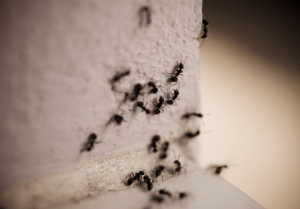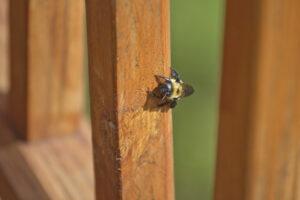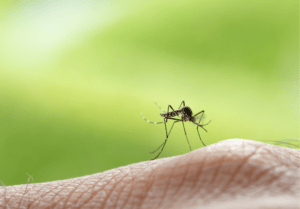Asian lady beetles are often mistaken for harmless ladybugs due to their similar appearance, but these insects are actually an invasive species that can quickly become a nuisance if you have an infestation. While they’re generally thought to only be an issue during the winter, they’re also active in the early spring as they search for new places to nest and find food. Though they might look like the cute ladybugs we’re used to, their presence can cause more problems than you’d expect. Luckily, there are ways to protect your home from these insects. Read on to learn more about Asian lady beetles.
Identifying Asian Lady Beetles
Asian lady beetles are small, oval-shaped insects that can be up to about 8 mm long. Their bodies are generally a shade of red, orange or yellow and can have black spots or no spots at all. The easiest way to know if you’re looking at a ladybug or an Asian lady beetle is by looking at its head. Asian lady beetles have more white on their heads, creating a black marking that looks like the letter “M.” Ladybugs can have some white on their heads, but it’s usually much less pronounced and they do not have the “M” marking.
Asian Lady Beetle Behavior
Unlike native ladybugs that primarily feed on aphids, Asian lady beetles have a much broader diet, including native ladybugs, butterflies, moths, nectar, pollen and even small fruits. They are categorized as an invasive species because they lack natural predators, and their behavior disrupts local ecosystems by reducing the population of vital pollinators and decreasing the overall biodiversity.
When Asian lady beetles invade people’s homes, they often secrete a foul-smelling liquid. This liquid leaves unsightly stains on furniture and walls and attracts other beetles to the area, which escalates the infestation. This liquid can also contribute to airborne allergies, making them even more of a nuisance to homeowners.
Preventing Asian Lady Beetles from Entering Your Home
Protecting your home from Asian lady beetles starts with sealing up cracks or gaps around windows, doors and the foundation. Even the tiniest of openings can allow these beetles to sneak in, so be thorough when checking for gaps. Installing or repairing screens on windows and vents is another great way to keep them outside.
Tips for Removing Asian Lady Beetles
The simplest method of getting rid of Asian lady beetles is to break out the trusty vacuum cleaner and suck them up. Be careful not to crush them, though, since the liquid they leave behind has a pungent odor that attracts more beetles. Instead, gently sweep or vacuum them up. Afterward, be sure to empty the dustpan or vacuum canister outside and away from your home to prevent them from crawling back out and reinvading your space.
How Professional Pest Control Can Help
Although the vacuum comes in handy, it’s not a long-term solution to an infestation. If you find yourself dealing with a tricky Asian lady beetle infestation, it’s time to reach out to a professional pest control company. Pest control technicians have the knowledge and tools to identify entry points, remove the insects and prevent them from coming back.
Dealing with any pest problem is never easy, especially with an invasive nuisance pest like Asian lady beetles. If you notice an infestation, don’t hesitate to call the Omaha expert pest control team at Pro-Staff. Our 9-step pest control process is designed to get pests out and keep them out. Call us at (402) 819-7378 or contact us online for a free quote.




